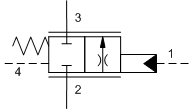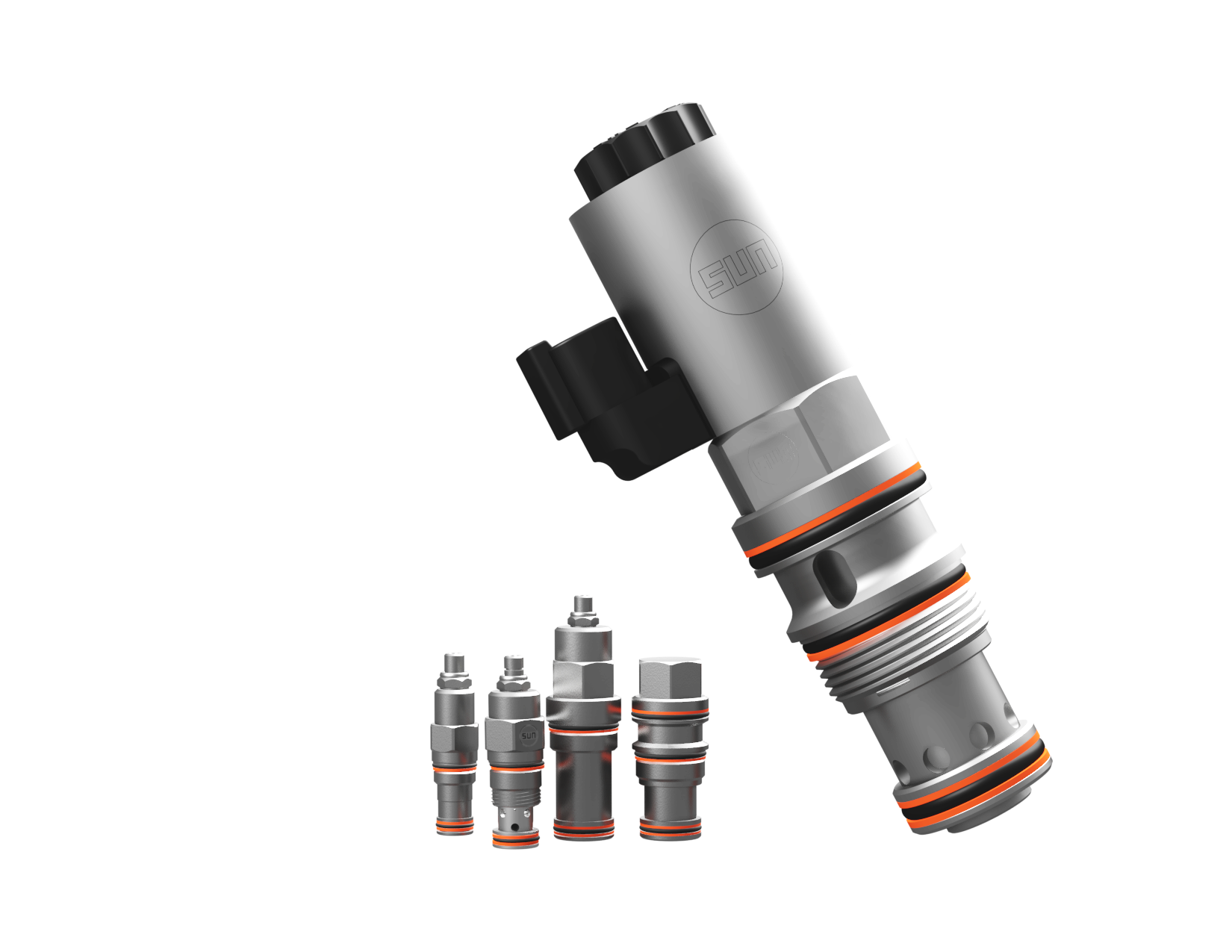
4 ports, normally closed proportional throttle pilot shift

A hydraulic flow control valve is used to regulate or limit the flow rate of hydraulic oil using an hydraulic control signal. The valve does not directly affect system pressure, but instead controls how quickly a hydraulic function is performed—for example, the speed at which a cylinder moves or a hydraulic motor rotates. Flow control valves are used to manage oil flow in one or multiple functions by throttling, distributing, or prioritizing the flow to different parts of the system. They can also be used to maintain a constant flow, even under changing load conditions, ensuring smooth and predictable operation.

4 ports, normally closed proportional throttle pilot shift
Hydraulic control of the flow control valve means that a pilot pressure from another part of the hydraulic system is used to actuate the valve. This pressure signal determines the valve’s opening, allowing the flow to be regulated proportionally to the level of the pilot pressure.
Hydraulically controlled valves are particularly useful in systems where electrical control is not possible or desired—for example, in environments with high temperatures, explosion risks, or where a fully hydraulic solution is preferred. Hydraulic control offers high precision and fast response, making these valves ideal for systems where multiple functions need to be coordinated without electronic control. The valves are often equipped with internal or external pilot supply, depending on the application requirements, and can also be combined with compensators to maintain a constant flow regardless of pressure variations. The result is reliable, robust, and energy-efficient control in demanding operating environments.
Flow control valves have a wide range of applications and are found in everything from industrial machinery to mobile work vehicles. They are used to control the speed of cylinders, motors, or other hydraulic functions, making them essential for ensuring precision, safety, and efficiency in various types of systems. For example, they can limit speed by restricting flow to a function, distribute flow between multiple functions, or prioritize flow to a specific function in systems where resources are limited.
Flow control valves are available in two basic types: one-way (unidirectional) and two-way (bidirectional). A one-way flow control valve regulates flow in one direction only, while allowing unrestricted flow in the opposite direction. In contrast, a two-way flow control valve is used when flow needs to be controlled in both directions, making it ideal for applications where movement or pressure must be regulated both ways.



Hydnet
EA Rosengrens gata 29
421 32 Västra Frölunda
+46 31 - 499 490
info@hydnet.se